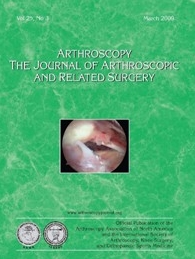
OSTEOARTHRITIS
Comparison of navigated versus conventional opening-wedge high tibial osteotomy
Arthroscopy. 2016 Oct;32(10):2072-208162 patients with medial knee osteoarthritis or osteonecrosis who were scheduled for opening-wedge high tibial osteotomy were randomized to the procedure using either combined CT-based and image-free navigation technology or conventional techniques to create the correction angle. The primary purpose of this study was to evaluate if navigation allowed for fewer coronal and sagittal outliers on postoperative computed tomography (CT). No significant difference at 2 years was noted between groups in the incidence of femorotibial angle outliers or in the clinical outcome measures assessed. However, the conventional group had a significantly greater number of tibial posterior slope outliers, and a significantly greater number of outliers in both planes.
Unlock the full ACE Report
You have access to {0} free articles per month.Click below to unlock and view this {1}
Unlock NowCritical appraisals of the latest, high-impact randomized controlled trials and systematic reviews in orthopaedics
Access to OrthoEvidence podcast content, including collaborations with the Journal of Bone and Joint Surgery, interviews with internationally recognized surgeons, and roundtable discussions on orthopaedic news and topics
Subscription to The Pulse, a twice-weekly evidence-based newsletter designed to help you make better clinical decisions
Exclusive access to original content articles, including in-house systematic reviews, and articles on health research methods and hot orthopaedic topics
Or upgrade today and gain access to all OrthoEvidence content for just $1.99 per week.
Already have an account? Log in


Subscribe to "The Pulse"
Evidence-Based Orthopaedics direct to your inbox.
{0} of {1} free articles
Become an OrthoEvidence Premium Member. Expand your perspective with high-quality evidence.
Upgrade Now












































































